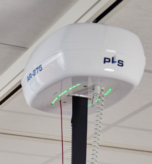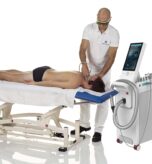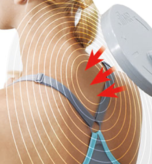
1.0 Introduction
Knee osteoarthritis (KOA) is a chronic, progressive joint disorder characterized by cartilage degeneration, subchondral bone remodelling, synovial inflammation, and varying degrees of pain and disability. As pain remains the most common complaint among patients, exploring non-invasive, effective interventions is critical for functional rehabilitation.
A study by Akaltun et al. (2021) found that High Power LASER Therapy combined with exercise therapy significantly reduced pain and improved joint function, range of motion, and femoral cartilage thickness when compared to exercise alone.
2.0 Understanding how does High Power LASER relieves pain?
High Power LASER uses near-infrared laser light (typically 980nm or 1064 nm wavelength) delivered at high peak power but low average power, enabling deep tissue penetration with minimal thermal damage. The physiological effects are primarily photochemical and photobiological rather than purely thermal.
Here are the key mechanisms by which HILT modulates pain and supports tissue healing in KOA:

A. ) Photobiomodulation and Cellular Repair
- Laser photons are absorbed by cytochrome c oxidase (CCO) in mitochondria, enhancing ATP production.
- Increased cellular energy supports:
- Cartilage matrix synthesis (e.g., proteoglycans, type II collagen)
- Fibroblast and chondrocyte proliferation
- Tissue repair and regeneration
Clinical implication: Improved chondrocyte activity may contribute to increased femoral cartilage thickness, as observed in the study.
B. ) Anti-inflammatory Action
High Power LASER suppresses the expression of pro-inflammatory cytokines (e.g., IL-1β, TNF-α) and COX-2, reducing prostaglandin E2 (PGE2) synthesis.
Enhances microcirculation and lymphatic drainage, promoting the removal of inflammatory metabolites.
Clinical implication: This anti-inflammatory cascade contributes to reduced joint swelling and improved mobility.
C.) Modulation of Nociceptors
High Power LASER alters nerve conduction velocity and reduces the excitability of A-delta and C fibers, which are responsible for nociceptive transmission.
Increases secretion of beta-endorphins and enkephalins, natural opioids that inhibit pain transmission at the spinal and supraspinal levels.
Clinical implication: Patients experience reduced pain intensity both during movement and at rest.
D.) Neuromodulation and Gate Control
High Power LASER activates large-diameter A-beta fibers, which compete with nociceptive input at the dorsal horn of the spinal cord—following the Gate Control Theory of Pain.
It also helps normalize sympathetic nerve activity, which may be heightened in chronic pain states.
Clinical implication: Enhances overall pain tolerance and contributes to central desensitization over time.
E.) Improved Joint Function and Range of Motion (ROM)
LASER therapy reduces muscle spasms, increases connective tissue extensibility, and enhances synovial fluid flow.
These changes allow for more effective participation in therapeutic exercise, crucial for functional recovery.
Clinical implication: Synergistic effect when HILT is combined with movement therapy in OT or PT sessions.
3.0 What Clinical Research Says about High Power LASER?
Study Design: Double-blind, randomized controlled trial, 40 patients with KOA
Intervention: Group A: High Power LASER + Exercise Therapy (ET)
Group B: Placebo Laser + Exercise Therapy
Duration: 10 sessions over 2 weeks
Key Outcomes at 6 Weeks:
- Pain (VAS): Significantly lower in HILT group
- Disability (WOMAC): Greater functional improvement
- Flexion ROM: Increased range of motion
- Cartilage Thickness: Measured via ultrasound; significantly improved in HILT group
Conclusion: High Power LASER combined with Exercise Therapy is more effective than ET alone in reducing pain, improving function, and enhancing joint structure in KOA patients.
(Akaltun et al., 2021, Clinical Rheumatology)
Can Laser Therapy Help Knee Pain? What the Latest Study Shows
Knee osteoarthritis (KOA) is a common condition that causes joint pain, stiffness, and difficulty moving. It affects people of all ages, especially older adults. If you run a physiotherapy or rehabilitation clinic, helping these patients move better and feel less pain is a top priority.
The good news? A recent study shows that High Power LASER Therapy can be a powerful tool to do just that.

4.0 What it means to add High Power LASER Therapy Device in your clinic
Adding a HILT device to your clinic can:
- Attract more patients with knee pain or arthritis
- Offer faster recovery and better outcomes
- Reduce the need for pain medications
- Differentiate your clinic with advanced tech-based therapy
Sessions are short, safe, and effective. Most patients feel relief in just a few sessions.
Get a MecMedix High Intensity LASER Therapy unit today. Mecmedix manufactures large range of LASER devices. MecMedix LASER devices are recognised all over the world.






